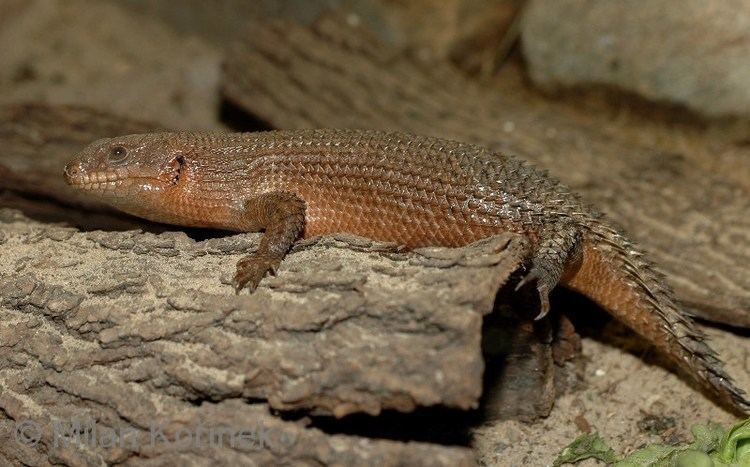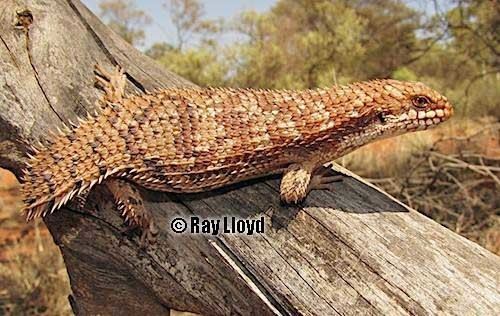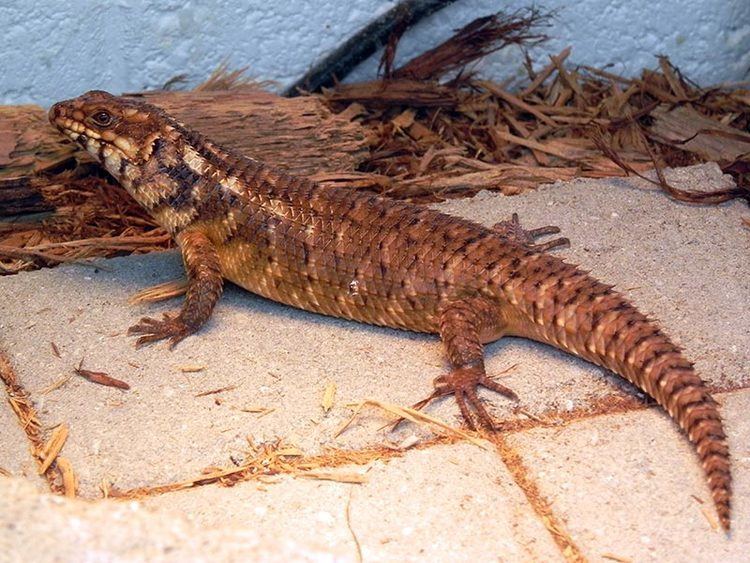Infraclass Lepidosauromorpha Family Scincidae Scientific name Egernia Phylum Chordata Order Scaled reptiles | Subphylum Vertebrata Infraorder Scincomorpha Higher classification Lygosominae Rank Genus | |
 | ||
Lower classifications Cunningham's skink, Egernia major, White's skink | ||
Hybrid reptile tiliqua x egernia
Egernia is a genus of skinks (family Scincidae) that occurs in Australia. These skinks are ecologically diverse omnivores that inhabit a wide range of habitats. However, in the loose delimitation (which incorporates about 30 species) the genus is not monophyletic but an evolutionary grade, as has long been suspected due to its lack of characteristic apomorphies.
Contents
- Hybrid reptile tiliqua x egernia
- Cunningham s skink egernia cunninghami
- Systematics taxonomy and evolution
- Splitting Egernia in four
- References

Some of the skinks traditionally placed in Egernia appear to be among the most intelligent squamates. They have been shown to be able to distinguish between relatives and unrelated conspecifics, and can recognize relatives individually. Several species form monogamous pair-bonds. Most of these species belong to Egernia sensu stricto, and similar behaviour is also known in the related Solomon Islands skink (Corucia zebrata). The latter means that the high intelligence and social skills are probably plesiomorphic for the Egernia genus-group as a whole, and that the solitary species appear to have evolved towards being less intelligent and social again. It may still be, however, that the intelligent behaviour is a homoplasy that evolved several times in the Egernia genus-group; the fact that Corucia is a monotypic and rather distinct genus makes it impossible to decide at present.

Cunningham s skink egernia cunninghami
Systematics, taxonomy and evolution

It is the namesake genus of the Egernia genus-group, which also includes the Solomon Islands skink (Corucia), Cyclodomorphus and the blue-tongued skinks (Tiliqua). In some older works, it is considered closely related to Mabuya, but even among the subfamily Lygosominae this genus does not seem to be particularly closely related and would—were the genus-groups treated at the rarely used rank of infrafamily—certainly constitute an infrafamily of its own. On the other hand, the enigmatic crocodile skinks (Tribolonotus) might be a very basal member of the Egernia genus-group.

The genus Egernia proper, as well as the other lineages, appear to be of Miocene—probably Early Miocene—origin, meaning they radiated at least 15, maybe 20 million years ago (mya). There are fossils of Egernia-like Lygosominae from around the Oligocene-Miocene boundary 23 mya, but these cannot be assigned to the present genus with certainty. Rather, they appear to be basal members of the Egernia genus-group, still very plesiomorphic Lygosominae with a habitus similar to Mabuya.
Splitting Egernia in four
Cladistic analysis of NADH dehydrogenase subunit 4, 12S rRNA, c-mos and β-fibrinogen intron 7 DNA sequence data delimits 4 clades in Egernia sensu lato, which are best regarded as separate genera—as had already been proposed in former times, often as early as the 19th century:
Bellatorias Wells & Wellington, 1984 (= Hortonia)
Largish to very large skinks (adult snout-vent length 160–310 mm and more) with a bulky angular body and rather large eyes. 26–36 rows of midbody scales; dorsal scales smooth or weakly keeled. The nasal scale has a postnarial groove running to the first supralabial scale; the subocular scale row is incomplete. Eyelids usually have conspicuous cream-coloured margins.
Egernia sensu stricto – spiny-tailed skinks and crevice-skinks
Mid-sized to large skinks (adult snout-vent length 100–240 mm) with a bulky, usually somewhat flattened body and small eyes. 24–46 rows of midbody scales; dorsal scales smooth, ridged, keeled or spiny (the tail is often notably spiny). The nasal scale has a postnarial groove; the subocular scale row is incomplete. Eyelids similar in colour to the adjacent scales.
Liopholis Fitzinger, 1843 (= Flamoscincus) – Australian desert and rock skinks
Smallish to largish-sized skinks (adult snout-vent length 75–200 mm) with a bulky angular body and rather large eyes. 34–52 rows of midbody scales; dorsal scales usually smooth. The nasal scale has no postnarial groove; the subocular scale row is incomplete. Eyelids usually have conspicuous cream-coloured margins.
Lissolepis Peters, 1872 – mourning skinks
Mid-sized skinks (adult snout-vent length 100–130 mm) with a bulky angular body and small eyes. 20–28 rows of midbody scales; dorsal scales smooth. The nasal scale has a postnarial groove; the subocular scale row is complete. Eyelids similar in colour to the adjacent scales.
